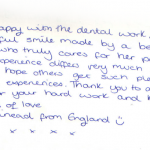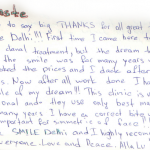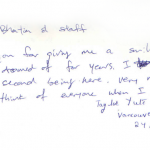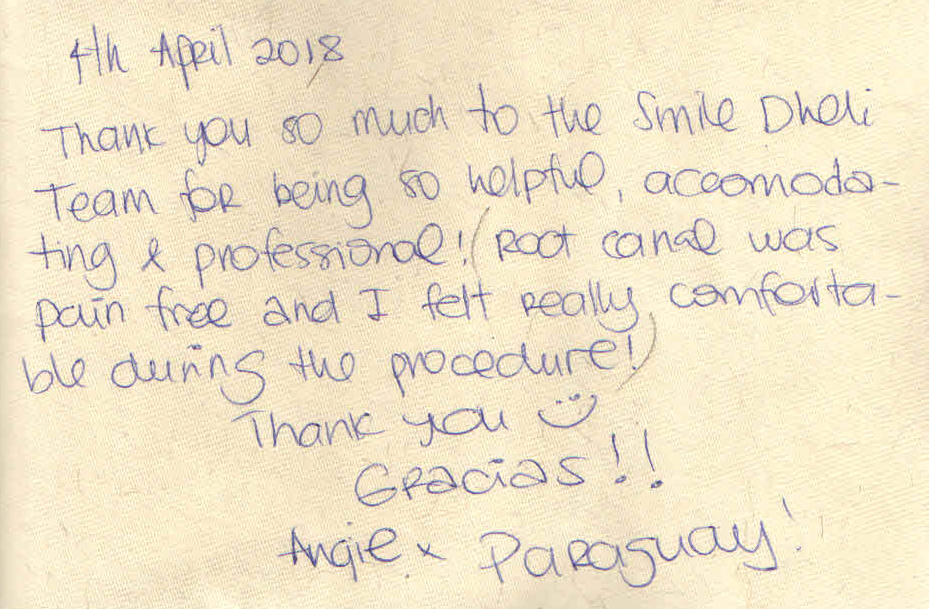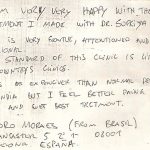A Shaky Tooth and It’s Treatment
Periodontal (gum) disease can be a very aggressive infection. If left untreated, it can destroy the vital periodontal structures that protect teeth and surround teeth and maintain their attachment to the jaw. The end result is tooth loss; harms both your oral health and appearance by causing damage to the surrounding bone and tissues.
Many people suffering from advanced periodontitis may have issues with their gums receding from the base of their teeth. This might also cause pockets of infection to form inside the gum tissues.
The most common cause of gum disease is when thin film of food remnants and excessive bacteria builds up on tooth surfaces and create excess plaque when oral hygiene is inadequate or inefficient and your body is unable to fight the infection.
But as the war between body and infection rages, the inflammation becomes chronic and damages the surrounding gum and bone tissues. As the gums become infected by the bacteria it causes gum attachment and supporting bone to be lost from the teeth, creating spaces between the gums and teeth known as periodontal pockets. The progression of periodontal disease becomes a vicious cycle: As the pockets deepen, dental hygiene becomes less effective.
Certain factors, however, including medications and chronic illnesses, can make someone more susceptible to gum disease even if he or she follows a thorough oral care routine.
Controlling gum disease and ultimately restoring health and appearance to damaged gums and tooth-supporting bone requires aggressive treatment, sometimes even surgical measures. Periodontal (gum) surgery treats moderate to advanced disease.
Gum surgery is a procedure wherein plaque build-up, deep-seated tartar, and biofilm are removed from between the teeth.
Gum surgery is used to treat gum disease in cases when periodontitis has moved to an advance stage; the tissue around the teeth is unhealthy and unable to be repaired through non-surgical treatments.
The objective of surgery is generally to eliminate pockets, regenerate attachment and to create more normal periodontal form, function and esthetics. The goal is to provide an environment more conducive to oral hygiene and maintenance care so that teeth can be kept for a longer period.
The disease develops and advances primarily because of a lack of effective hygiene, so the patient must therefore renew and maintain a daily habit of brushing and flossing, and a routine of regular dental visits for cleanings and checkups (at least twice a year and maybe more with advanced gum disease). He or she should also consider stopping tobacco use and other habits that harm oral health.
Dentists in Delhi remind their patients to come for a six monthly check and clean, as gum problems remain silent for a long time.
There are several types of gum surgeries that your dentist might recommend to treat the problem if you’ve developed gum disease (also known as periodontal disease) severe enough to require surgery.
Gum surgery might be performed for either medical or cosmetic reasons. The majority of gum surgeries, however, are performed to address periodontal disease inside the gum.
Gum surgeries are of the following types-
Flap Surgery – Gingival flap surgery is a procedure during which the gums are lifted from the teeth and temporarily folded back, allowing the dentist to reach the root of the tooth and the bone. This allows the dentist to treat gum disease deep under the gum line by removing/cleaning bacteria that have infected the gums, eliminating diseased tissue and examining the bone for problems. Gingival flap surgery also might be performed along with osseous surgery, in which the bone that holds one or more teeth in place is reshaped. After cleaning, the healthy gum tissue is tucked back tightly to fit the teeth at the base and discourage any further bacterial growth in the future.
This is usually recommended for people who have moderate to severe peridontitis.
Gingival flap surgery is one of the more common procedures for patients with receding gums and infected pockets in the gum tissue.
Crown lengthening– In this procedure, dentist removes an overgrowth of gum tissue from your teeth, making your teeth appear longer. This procedure is used for cosmetic effects as well as to treat gum disease. If a tooth has broken off, for example, a dentist might need to cut away the gum to expose the tooth below the gum line in order to work on it. This procedure is also used when a crown, repaired tooth or filling falls out, exposing decay underneath. The dentist will need to remove gum tissue in order to expose a solid foundation on which to set a new crown or filling.
Soft tissue graft– It is a type of gum surgery that restores receding gums. Gum tissue, usually removed from the palate and is added to the gum line on to the area that has been affected or has receded or has been removed due to gum disease. This procedure is often used for cosmetic purposes as well as to treat gum disease because it covers areas where the root is becoming exposed and improves the appearance of the teeth. . This procedure is used to strengthen the gums and teeth, to repair gum disease damage, to prevent further tooth root exposure, to eliminate excessive sensitivity and to improve the aesthetic appeal of the gum area around the tooth.
Gingivectomy – is the procedure which involves removal of excess and infected gums that may have overgrown on the patient’s teeth. Overgrowth of gum tissue might be caused by certain medications or for no reason at all. Having an excess of gum tissue makes it difficult to keep the teeth and gums clean and free of disease.
It was originally developed for treating gum disease but today it is also used for preventing gaps or pockets forming between teeth and gums where bits of food particles and infectious bacterial colonies may thrive and for cosmetic purposes.
During the procedure, the dentist will pull back the gums, clean the diseased area, trim the gums and any diseased tissue and then will advance some of the remaining health gum tissue back over the base of your teeth.
Guided tissue regeneration – this procedure occurs when the bone that supports the tooth is destroyed. The aim of this surgery is to stimulate bone and gum tissue growth. A small piece of mesh like fabric is inserted between the bone and gum tissue, often done in combination with flap surgery. This prevents tissue growth in the area where the bone needs to regenerate, allowing for the regrowth of bone and connective tissue to support the teeth and to encourage your gum tissues to regenerate and fit snugly around the teeth again.
Bone Surgery – Bone surgery is performed after flap surgery has already been done. The bone is reshaped to rid the surface of any craters that may promote bacteria collection and growth.
No matter which type of gum surgery you receive, it is important to practice good oral hygiene after the treatment in order to avoid any infection.
In reputed dental clinics in India, patients are being educated about the importance of gums i.e. gums are the foundation of the teeth and that all the bacteria enters the body through the gums, creating systemic problems.
It is important for people undergoing surgery to be in general good health and not overly stressed. It is also important to give your dentist a full medical history with all current conditions and medications you are taking, including those to which you are allergic. Situations exist medically where it is not advisable for individuals to undergo surgical treatment. These mainly fall into the following categories:
- Uncontrolled periodontal disease
- Smoking and alcohol — can not only make periodontal disease worse, but will delay healing following surgery
- Systemic (bodily) or medical conditions which are uncontrolled, e.g. diabetes, HIV (AIDS), immuno-compromised patients (in whom resistance to disease is diminished), cardiovascular (heart and blood vessel) disease.
- Medications that can affect periodontal disease or surgery, e.g. aspirin, coumadin which may cause bleeding that is difficult to stop; medications that cause gum overgrowth, e.g. calcium channel blocking drugs used to control cardiovascular disease, other medications used to control transplant rejection, etc.
Dentists in India are taking care to counsel the patients about the adverse effects of bad oral hygiene and the relation between systemic and oral health.
Proper hygiene and maintenance by both you and your dentist is essential for preventing this. Gum surgery is performed to regenerate lost bone and to help create an environment around the teeth and gums that makes it easier to clean and maintain them.
Gum surgery is considered as part of an overall strategy to stop periodontal (gum) disease’s unchecked advance so that healing can take place. This will allow you to keep your natural teeth for as long as possible—maybe even for life.
Dental clinics in Delhi are routinely treating gum health where your shaky teeth can be saved by various surgical procedures so that you can have your own natural teeth in your mouth till you live.
Posted By – Dr. Shriya








